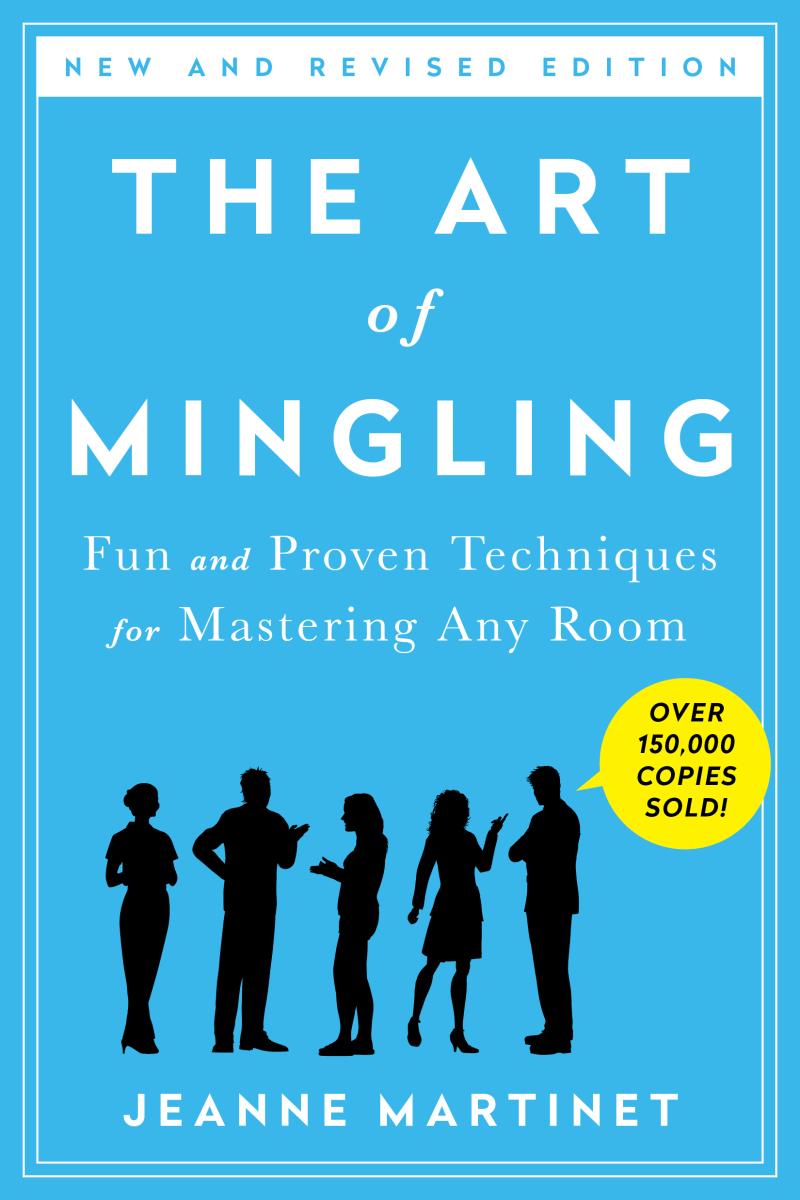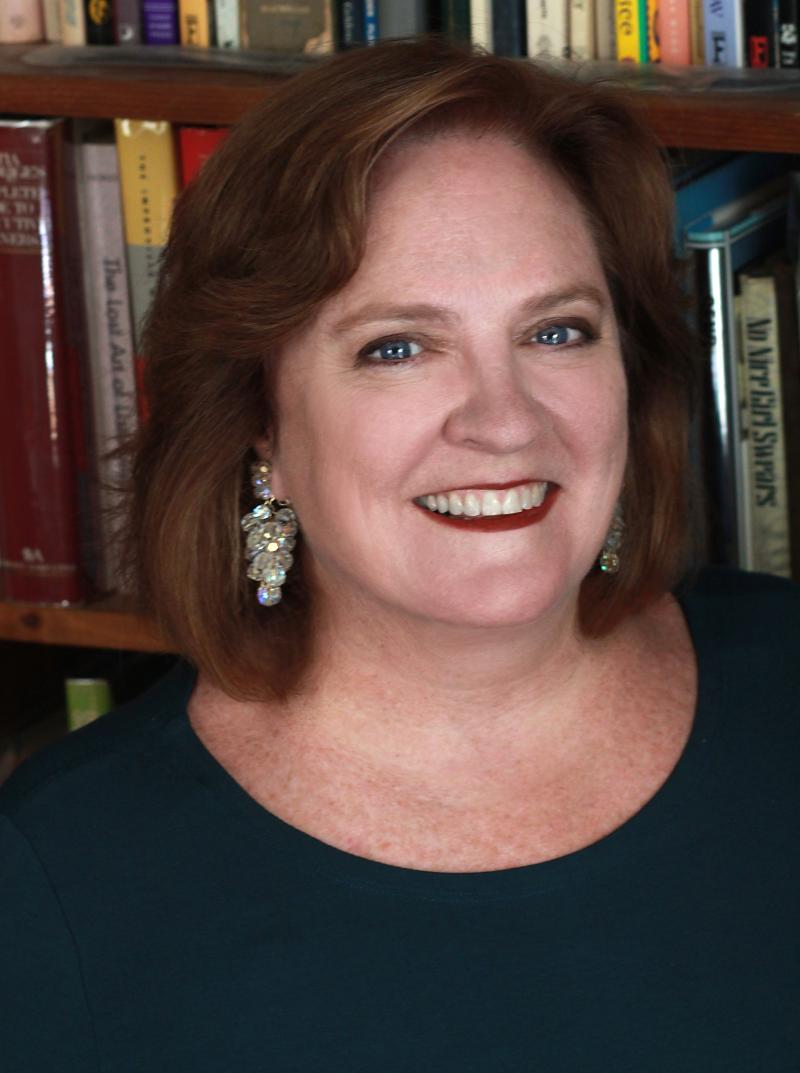Q&A: Afraid to Break the Ice? Never Fear, Miss Mingle is Here

Most of us have felt it, whether you’re a new member of the University of Virginia community or anyone going to a social or professional function: that anxiety of entering a roomful of strangers and not knowing what to say.
Never fear, Miss Mingle is here.

Jeanne Martinet, a U.Va. alumna in English, Class of 1980 – aka “Miss Mingle” – has the solutions for making the best of any social situation. The third edition of her book, “The Art of Mingling,” comes out Tuesday and offers readers – whether timid or apparently gregarious – an up-to-date guide for learning the skills to master any room, glide through an awkward gathering or even become the life of the party.
Martinet said she feels the tips she has gathered over the years and most recently for the new edition of “The Art of Mingling” are more important than ever in this age of rampant Internet and cell phone interaction.
Her prose reads like a good friend giving you advice you actually want to hear. Her light-hearted, witty style gently masks her deeper mission to restore the joys of conversation and real human connection.
“Ms. Martinet believes in mingling the way some people believe in yoga,” The New York Times wrote in its review. “To her it is a discipline and form of exercise to be practiced on a regular basis.”
Martinet is the author of eight books; “The Art of Mingling” has sold 150,000 copies and has been published in 10 countries. The new edition recently made the Library Journal’s “Editors’ Picks” list for fall 2015. She has been featured in such publications as The New York Times, Salon and The Washington Post. She has shared her humor and mingling know-how on numerous TV and radio shows, including NBC’s “Today,” and NPR’s “Morning Edition.” She lives, writes and mingles in New York City.
UVA Today recently contacted Miss Mingle to relay some of her best advice and find out how U.Va. prepared her for her career in writing.

Q. How did you get into this social arena, “the art of mingling”?
A. The idea came to me after a wedding reception in Dayton, Ohio, while I was hanging out with college friends – my U.Va. classmates. They all wanted to know how I had met practically everyone in the entire town during the reception, while they had pretty much stuck to themselves. That’s when I realized that one, other people were averse to talking to people they don’t know, and two, I had a particular knack for mingling. So just for a laugh, really, I began to jot down my mingling techniques on a cocktail napkin.
Q. How did you come up with the term “minglephobia” and what does it mean?
A. When I started doing research for the book, I found that almost every single person I talked to would immediately say, “I hate going to large parties,” or, “Oh, I really need your book!” At first I was surprised at these responses, so I kept asking every person I met, and about nine out of 10 of them confessed to what I have termed “minglephobia” – the fear of large parties. Even people who have interviewed me on TV and radio are afflicted by this phobia – people who you would think would be socially confident. It is fascinating how many different kinds of people dread large gatherings. It seems right up there next to fear of public speaking, which as I understand it, is only next to fear of death.
Q. Why is the art of mingling more important than ever? How is face-to-face interaction different from social interaction online?
A. The attraction of social networking sites is twofold: You have instantaneous access to virtually everyone in the world, and you also can be at home in your PJs with your hair uncombed while you are interacting. The problem is, you are not getting actual human contact. At a real gathering of your fellow human beings, there is a physical energy exchange between people. In cyberspace, the subtleties of facial expression are lost (even on Facetime), as is the touch of someone’s hand or the shared experience of hearing someone’s laughter from across the room. Socializing online is to real mingling at a party what playing a Wii ski game is to actual skiing: the latter takes a lot more effort and is riskier, sure, but it is a lot healthier, more exhilarating and rewarding.
Ten years ago there was no Twitter and no Instagram; Facebook and YouTube were in their infancy. Today the average American spends about 11 hours a day with electronic media. Unfortunately, the more we interact online, the more our mingling muscles atrophy. People don’t even nod or smile to each other when they pass on the street anymore; they are all glued like zombies to their smartphones. Without regular exercise of our social selves, we are becoming less and less adept at face-to-face communication, which only increases our minglephobia even more.
Q. If you were going to give three examples of your most important advice, what would they be?
A. I would say that my No. 1 piece of advice is to realize that every party or gathering you are invited to where there are going to people you don’t know is an opportunity not to be passed up; it’s a possible adventure with many potential rewards. Having conversations with people you don’t know can expand your mind and feed your soul. Even a 10-minute conversation about something trivial – if it’s one where you are connecting with someone on some level – makes you feel good. The more people you meet and talk to, the more perspective you will gain. And you also never know who you might meet.
The second most important thing to remember is that almost everyone in the world has the same nervousness about being at the party that you do. They might not show it, but they are just as afraid of approaching a stranger as you are. No one is thinking about you, they are thinking about themselves. Knowing this can help you to relax.
The third part of my “prescription” is this: Having a good time should be your top priority, no matter what your objectives might be. Whether you are at a business affair or a neighbor’s party, whether you are mingling for love or for career advancement, your primary goal must be our own enjoyment. Unless you truly enjoy meeting and talking with people, your success will be limited. Mingling should be its own reward, your secondary goals – getting a job, landing a client, finding a mate – will be easier to reach if you are having fun first and foremost.
Q. Is it different for a woman going alone to a social function compared to a man doing the same thing? If so, how? Does your advice differ?
A. The only real differences I can think of (besides the fairly well-known fact that women are generally more at ease in most social situations than men are) are in the various mingling techniques used. For example, in “The Art of Mingling” I describe four basic entrance techniques. In one of them, the “Flattery Entrée,” your opening line is to compliment someone on an accessory (“What cool glasses!”/ “What beautiful earrings.”/ “Wow, is that an Apple Watch?”) Women find this easier to do than men. On the other hand, if you are not at a party but at a crowded bar, where there is more of a singles/romance vibe than there is at most parties, more often the man will talk to a woman before she will talk to him. However, this is of course a gender generalization – and obviously if it’s a gay bar it does not apply.
If it is a party, however, my advice for both sexes is the same: one, locate and greet the host; two, get a drink; three, mingle.
Q. Please describe your experience in publishing, editing and writing. What else are you working on?
A. After graduating from the University, I attended the Denver Publishing Institute, and my first publishing job was in the publicity department at Workman Publishing in New York in 1984. I soon realized I was better suited to editorial, so I landed a job working for the then-illustrious editor-in-chief Joyce Engelson – first at St. Martin’s Press and later at E.P. Dutton. I acquired and edited a wide variety of books at E.P. Dutton, from commercial women’s fiction to humorous nonfiction. In 1989, E.P. Dutton was dissolved by its parent company, Penguin, and I became a freelance editor and writer.
An agent I knew encouraged me to write “The Art of Mingling.” It took a while to find a publisher, but when the book came out, I was immediately invited to be on the “Today” show with Katie Couric (another U.Va. alumna) – as well as many other shows. It was quite exciting for a first-time author! Since then I have published eight other books – the most recent of which is this completely revised and updated edition of “The Art of Mingling.”
Q. How did U.Va. prepare you for pursuing your career?
A. My father always told me, “You don’t go to college to get a job, you go to get an education,” so imagine my delight when it turned out that what I learned at U.Va. was, in fact, quite useful in my chosen career. The first time I was asked to do a “reader’s report” as part of the interview process to be an editorial assistant at St. Martin’s Press, I realized it was a skill I had already honed from all the papers I’d written in college as an English major. That reader’s report landed me my job. Obviously, the extensive reading and writing I did at U.Va. gave me a great head start, and I have used and improved upon those skills throughout my writing and editing career. The passion for books that blossomed during my college years continues to propel me forward in the fields of writing and publishing.




